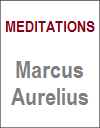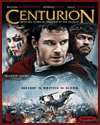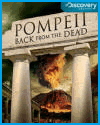 |
| Ancient Rome Books and Films |
|---|
| www.studenthandouts.com > World History > Ancient Rome > Ancient Rome Books and Films |
 |  |  |  | |||||||
| Meditations by Marcus Aurelius | Centurion (2010) | Augustus by A.H.M. Jones (1970) | Pompeii: Back from the Dead (2010) |
|
Learning about the ancient Romans through film can be a compelling and engaging way to explore history, but it also comes with its pros and cons.
Pros: Visual Engagement: Film brings history to life through visual storytelling, providing students with a more vivid and immersive experience than reading textbooks or listening to lectures. Historical Accuracy: Some historical films strive for accuracy in costumes, settings, and cultural details, allowing students to get a sense of the ancient Roman world. Cultural Context: Films often depict daily life, customs, and traditions, helping students understand the social and cultural context of ancient Rome. Complex Narratives: Movies can explore complex historical narratives, including political intrigue, military campaigns, and social dynamics, in a way that is easier to grasp than dense textbooks. Stimulating Discussions: Viewing films can spark class discussions and debates about historical accuracy, interpretations of events, and ethical considerations, fostering critical thinking. Emotional Connection: Well-acted scenes and character development in films can create emotional connections with historical figures and events, making history more relatable. Accessibility: Films are readily accessible, and many historical movies about ancient Rome are available for educational use, making them a convenient resource for teachers. Cons: Historical Inaccuracy: Many historical films take creative liberties with facts and events for dramatic effect. Students may absorb inaccurate information or misconceptions. Bias and Stereotypes: Some films may perpetuate stereotypes or biases related to ancient Rome or its people, potentially reinforcing misconceptions. Simplification: To fit a narrative into a typical movie runtime, complex historical events are often simplified or condensed, potentially leading to an incomplete understanding of the subject matter. Omission of Key Details: Important historical details may be omitted for the sake of brevity or dramatic pacing, leading to gaps in students' knowledge. Lack of Diverse Perspectives: Films may not represent the diverse perspectives and experiences of individuals in ancient Rome, including women, slaves, and marginalized groups. Depiction of Violence: Some historical films about ancient Rome contain graphic violence, which may not be appropriate for all age groups or classroom settings. Overemphasis on Dramatic Moments: Films often emphasize dramatic or sensational moments, potentially skewing students' perceptions of what was historically significant. Passive Consumption: Students may passively consume information when watching films, potentially missing the opportunity for critical analysis and discussion. Limited Academic Depth: Films may not delve into the academic depth and detail that a dedicated history course or textbook on the ancient Romans might provide. To maximize the benefits and minimize the drawbacks of learning about ancient Rome through film, educators can use movies as supplementary materials alongside primary and secondary sources, engage students in discussions and critical analysis, and emphasize the importance of historical accuracy and critical thinking. Additionally, educators should carefully select films that align with the curriculum's learning objectives and ensure that they are age-appropriate for their students. It can also be useful for teachers to show clips of films rather than an entire film. |
| Ancient Rome Books and Films | Ancient Rome Outlines and PowerPoints |
| Ancient Rome Maps and Pictures | Ancient Rome Study Games |
| Ancient Rome Miscellany | Ancient Rome Worksheets |
| www.studenthandouts.com > World History > Ancient Rome > Ancient Rome Books and Films |






